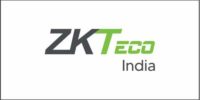 As the Internet of Things (IoT) ecosystem expands, with billions of interconnected devices contributing to data generation and real-time decision-making, robust access control mechanisms become essential for safeguarding sensitive information and securing network infrastructure. Unlike traditional networks, IoT ecosystems face unique challenges due to the distributed nature of devices, limited computational resources, and the variety of data generated. This survey explores the specific challenges of IoT access control, emerging solutions, and best practices to protect IoT environments against unauthorized access and cyber threats.
As the Internet of Things (IoT) ecosystem expands, with billions of interconnected devices contributing to data generation and real-time decision-making, robust access control mechanisms become essential for safeguarding sensitive information and securing network infrastructure. Unlike traditional networks, IoT ecosystems face unique challenges due to the distributed nature of devices, limited computational resources, and the variety of data generated. This survey explores the specific challenges of IoT access control, emerging solutions, and best practices to protect IoT environments against unauthorized access and cyber threats.
The Unique Challenges of Access Control in IoT Ecosystems
- Scale and Heterogeneity
IoT networks often consist of a vast number of devices with diverse hardware and software configurations. This heterogeneity makes it challenging to establish a unified access control protocol that can accommodate different communication standards, device capabilities, and security needs.
- Resource Constraints
Many IoT devices operate with limited processing power, memory, and energy. As a result, conventional access control methods—such as complex cryptographic protocols and multi-factor authentication—can be resource-intensive and unsuitable for low-power devices.
- Interoperability and Scalability
IoT systems frequently involve integration across multiple vendors, each with its own access control protocols and data exchange standards. This lack of interoperability complicates secure access management, especially as the network scales and requires cross-platform communication.
- Dynamic Network Topology
IoT environments are dynamic, with devices frequently joining, leaving, or changing roles in the network. Traditional access control solutions may struggle to accommodate the need for dynamic, real-time policy updates in response to changes in device state or network configuration.
- Data Privacy and Security Risks
IoT networks generate and transmit sensitive data, such as personal health information, geolocation data, and financial transactions. Unauthorized access to such data can lead to privacy violations and potential regulatory non-compliance.
Emerging Access Control Models and Solutions for IoT
- Attribute-Based Access Control (ABAC)
Model Description: ABAC defines access control policies based on a set of attributes associated with users, devices, and the environment, allowing for highly granular permissions.
IoT Adaptation: In IoT systems, ABAC can incorporate device attributes (e.g., device type, location) and contextual information (e.g., time of access, network conditions) to make dynamic access control decisions. Lightweight ABAC solutions tailored to IoT devices can manage access based on a device’s current operational state and context, which is particularly useful for mobile and dynamic IoT environments.
- Role-Based Access Control (RBAC) and Hierarchical Access Models
Model Description: RBAC assigns access rights based on predefined roles, which simplifies access management in structured environments.
IoT Adaptation: IoT ecosystems with well-defined hierarchies—such as smart homes or industrial IoT (IIoT)—can implement RBAC to allocate permissions based on role. In these cases, hierarchical models can be used, where different layers (e.g., administrator, device operator, end-user) have distinct access privileges.
- Capability-Based Access Control (CapBAC)
Model Description: In CapBAC, devices are granted tokens (capabilities) that specify their access rights to resources, reducing the need for centralized access control lists (ACLs).
IoT Adaptation: CapBAC is highly suitable for decentralized IoT environments, where each device can receive and exercise its capabilities independently. The model is particularly effective in peer-to-peer IoT networks and edge computing, as it offloads the access decision-making process to individual devices, reducing central dependency.
- Blockchain-Based Access Control
Model Description: Blockchain technology introduces a decentralized ledger to store access policies and log access events, promoting transparency and immutability.
IoT Adaptation: Blockchain can create a decentralized, tamper-proof access control framework for IoT networks, enabling secure device authentication and access auditing. Smart contracts can enforce access rules autonomously, providing real-time policy updates across distributed IoT devices without requiring a central authority.
- Machine Learning-Driven Access Control
Model Description: Machine learning algorithms analyze device behavior patterns to identify potential security anomalies, adapting access policies based on usage patterns.
IoT Adaptation: In IoT environments, machine learning can enhance access control by detecting suspicious behaviors or anomalies in device communication. For example, an IoT system might restrict access if a device exhibits unusual traffic, indicating possible compromise. This approach is particularly valuable in large-scale IoT systems where manual access management is impractical.
Best Practices for Secure IoT Access Control
- Use Lightweight Cryptographic Protocols: Implement lightweight cryptography tailored for IoT to ensure security without overloading device resources. Examples include Elliptic Curve Cryptography (ECC) and hardware-optimized protocols like HMAC.
- Implement Multi-Layered Access Control: Use a combination of access control models (e.g., ABAC and CapBAC) to address specific device types and environments, creating redundancy and flexibility across the network.
- Adopt Identity and Trust Management Frameworks: Securely manage device identities using protocols like OAuth 2.0, PKI, and device certificates, ensuring that only authenticated devices gain network access.
- Deploy Continuous Monitoring and Real-Time Alerts: Regularly monitor device behavior for anomalies and configure alerts for any unauthorized access attempts. Real-time monitoring is critical in identifying and mitigating access risks early, particularly in dynamic IoT networks.
- Design for Scalability and Interoperability: Implement interoperable access control frameworks that can accommodate future expansion and cross-platform integration, especially for large-scale IoT applications.
- Integrate with Edge and Fog Computing for Localized Access Control: Edge and fog nodes can offload access control decisions from centralized cloud systems, reducing latency and enabling real-time access management for IoT devices within local networks.
Case Studies and Applications of IoT Access Control
- Smart Homes and Wearables
In smart home environments, devices like smart locks, cameras, and personal health devices require fine-grained, user-specific access controls to protect sensitive personal information. Mobile ABAC systems have shown effectiveness, enabling personalized access settings based on location and user behavior.
- Industrial IoT (IIoT) and Smart Manufacturing
IIoT environments incorporate CapBAC and blockchain solutions to secure industrial equipment access, reducing dependence on centralized management. In smart manufacturing, blockchain-based access controls ensure only authorized users operate machinery, while CapBAC grants specific capabilities to service devices autonomously.
- Healthcare and Telemedicine IoT Devices
 Healthcare IoT (HIoT) faces high-stakes security challenges due to the sensitive nature of patient data. Hierarchical RBAC is commonly implemented in hospitals, with various tiers for healthcare professionals, administrators, and patients. Additionally, machine learning helps detect anomalies in device usage, protecting patient data and supporting regulatory compliance. Access control is crucial for the secure operation of IoT ecosystems, where the diversity and scale of devices challenge traditional access control approaches.
Healthcare IoT (HIoT) faces high-stakes security challenges due to the sensitive nature of patient data. Hierarchical RBAC is commonly implemented in hospitals, with various tiers for healthcare professionals, administrators, and patients. Additionally, machine learning helps detect anomalies in device usage, protecting patient data and supporting regulatory compliance. Access control is crucial for the secure operation of IoT ecosystems, where the diversity and scale of devices challenge traditional access control approaches.
Emerging models like ABAC, CapBAC, and blockchain-based access control are well-suited for IoT’s distributed nature, and integrating machine learning further enhances security by enabling adaptive access management based on real-time data.
As IoT continues to evolve, the next steps include developing standardized protocols to improve interoperability and leveraging artificial intelligence for predictive access control.
By implementing tailored access control solutions, IoT can remain resilient against security threats, ensuring data privacy and safety across connected environments.























































